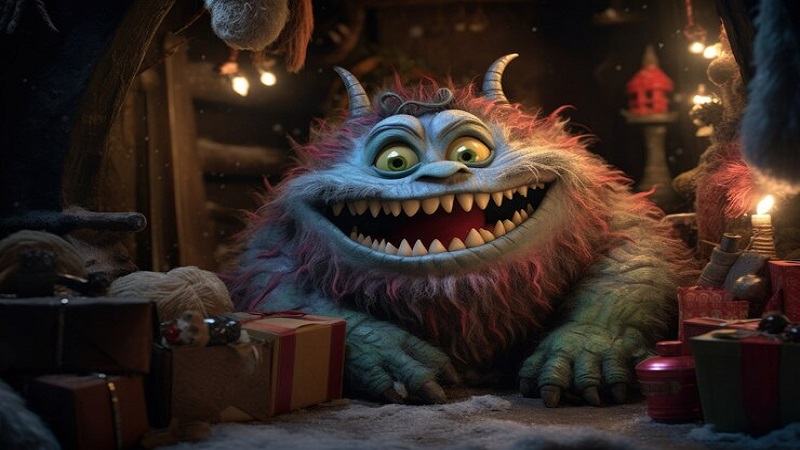Monster art is a fascinating genre that blends imagination, fear, and creativity. It involves the depiction of mythical creatures, supernatural beings, and fantastical entities that often embody the fears and fascinations of human society. The origins of monster art can be traced back to ancient civilizations where mythical creatures adorned pottery, sculptures, and murals. These early representations were deeply rooted in mythology and folklore, serving both as cautionary tales and symbols of power.Complete Information About Art:jgcszra-dgy= Monster
Evolution Over Time
Over centuries, monster art has evolved significantly. From the terrifying gargoyles of medieval cathedrals to the intricate Japanese yokai illustrations, and the modern digital renderings of grotesque creatures in video games and movies, monster art continues to captivate and horrify audiences.Complete Information About Art:jgcszra-dgy= Monster Each era brings its own style, technique, and interpretation, reflecting the changing cultural and social landscapes.
The Appeal of Monster Art
Psychological Fascination with Monsters
Why are we so drawn to monsters? Psychologists suggest that monsters represent our deepest fears and anxieties. By externalizing these fears into tangible forms, we can confront and understand them. Monsters challenge our perceptions of normalcy and morality, pushing the boundaries of imagination.
Cultural Impact and Popularity
Complete Information About Art:jgcszra-dgy= Monster have a pervasive presence in popular culture. From the classic monsters like Frankenstein and Dracula to contemporary icons like Godzilla and the Demogorgon from “Stranger Things,” monster art plays a crucial role in storytelling. It influences literature, movies, comics, and video games, shaping our collective imagination and cultural identity.
Styles and Techniques in Monster Art
Traditional Art Techniques
Drawing and Sketching
The foundation of monster art often begins with simple sketches. Artists use pencils, charcoal, and ink to create detailed line work, capturing the form and features of their monstrous creations.
Painting
Painting allows artists to bring their monsters to life with color and texture. Techniques like watercolor, acrylics, and oil paints enable artists to add depth, mood, and atmosphere to their work.
Digital Art Techniques
Digital Illustration
With the advent of digital technology, artists now use software like Adobe Photoshop and Procreate to create intricate digital illustrations. These tools offer versatility and precision, allowing for detailed and dynamic compositions.
3D Modeling
3D modeling has revolutionized monster art. Using programs like Blender and ZBrush, artists can sculpt three-dimensional creatures, providing a lifelike presence. This technique is particularly popular in the gaming and film industries.
Famous Monster Artists and Their Works
Historical Artists
Historical monster artists laid the groundwork for the genre. H.P. Lovecraft’s eerie illustrations, Francisco Goya’s dark and grotesque paintings, and Hieronymus Bosch’s bizarre and nightmarish scenes are seminal works that continue to inspire modern artists.
Contemporary Artists
Today, artists like H.R. Giger, known for his work on the “Alien” franchise, and Guillermo del Toro, with his visionary creatures in films like “Pan’s Labyrinth,” have pushed the boundaries of monster art, blending horror with beauty and creativity.
Creating Your Own Monster Art
Finding Inspiration
Inspiration for monster art can come from various sources. Nature, mythology, literature, and even personal fears can spark the imagination. Observing animals, reading folklore, and exploring different cultures can provide a rich tapestry of ideas.
Developing Concepts
Concept development is crucial. Artists brainstorm and sketch multiple ideas, experimenting with shapes, sizes, and features. They consider the monster’s backstory, environment, and purpose to create a coherent and compelling design.
Bringing Monsters to Life
Sketching
Begin with rough sketches to establish the basic form and proportions. Focus on the silhouette and major features like eyes, mouth, and limbs.
Adding Details
Gradually add details, refining the lines and features. Consider textures, patterns, and anatomical structures that make the monster unique.
Coloring and Texturing
Add color and texture to enhance realism and depth. Use shading and highlights to create a three-dimensional effect. Experiment with different color schemes to evoke specific emotions and atmospheres.
Showcasing and Sharing Monster Art
Online Platforms
Artists can share their work on various online platforms like Instagram, DeviantArt, and ArtStation. These platforms offer exposure and opportunities for feedback and collaboration.
Art Exhibitions
Participating in art exhibitions provides a chance to showcase work to a broader audience. It also allows for networking with other artists and art enthusiasts.
Collaborations and Communities
Joining art communities and collaborations can be enriching. Engaging with fellow artists through forums, social media groups, and collaborative projects can provide support, inspiration, and growth.
Conclusion
Monster art is a dynamic and captivating genre that invites artists and viewers to explore the depths of imagination and fear. Whether through traditional or digital techniques, creating monster art involves a blend of creativity, technique, and storytelling.Complete Information About Art:jgcszra-dgy= Monster By understanding its history, appeal, and methods, anyone can embark on the exciting journey of bringing monsters to life.
FAQs
-
What materials do I need to start creating monster art?
- Basic materials include pencils, paper, and erasers for sketching. For painting, you might need watercolor, acrylic, or oil paints. For digital art, a tablet and software like Photoshop or Procreate are essential.
-
How can I improve my monster drawing skills?
- Practice regularly, study anatomy, and observe nature. Experiment with different styles and techniques, and seek feedback from other artists.
- What are some common themes in monster art?
- Common themes include horror, fantasy, mythology, and science fiction. Monsters often represent fears, moral dilemmas, and the unknown.
-
Can anyone learn to create monster art, or do you need special talent?
- Anyone can learn with practice and dedication. Talent helps, but skills are developed through consistent effort and learning.
-
Where can I find inspiration for my monster designs?
- Inspiration can come from nature, mythology, literature, movies, and personal experiences. Observing animals, reading folklore, and exploring different cultures can spark ideas.Read More Infotimedod.
